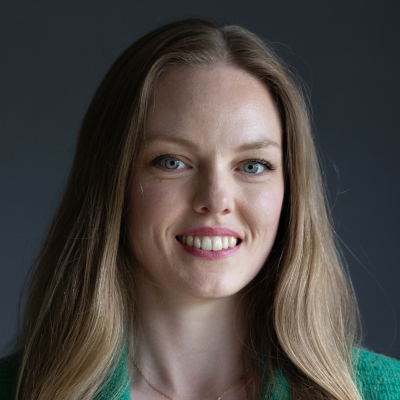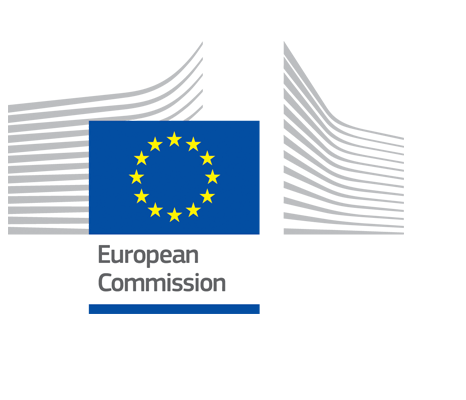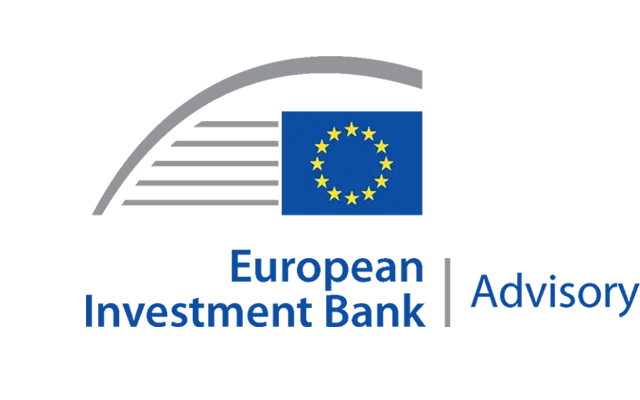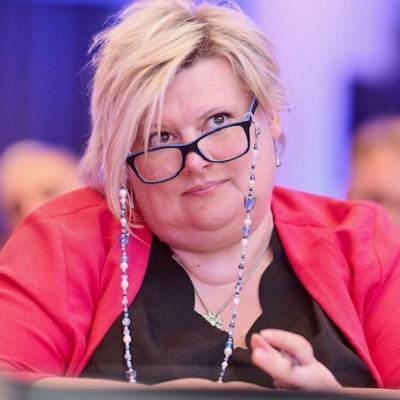New to financial instruments?

A discussion with Iveta Ivánová, Andrzej Urbanik, and Nathalie Van Neck from DG Regio, hosted by Francisca de Novais e Silva, European Investment Bank.
Introduction
Francisca: Hello, and welcome to a new episode of the fi-compass Jam Sessions podcast. My name is Francisca de Novais e Silva, and I joined the fi-compass team at the European Investment Bank a few months ago, where for the first time, I had a chance to work with EU shared management financial instruments, or financial instruments for short. As you can imagine, being new to the field, I had lots of questions when I started, for which the “New to financial instruments?” Q&A section on our website was quite helpful.
However, I thought it would be useful to add an extra layer to this and do a fi-compass Jam Sessions, especially dedicated to addressing these and other questions that should be common to any new EU financial instruments' practitioner.
And to help me do this, I am very happy to have with me today Iveta Ivánová, Andrzej Urbanik, and Nathalie Van Neck from DG REGIO. Hi, colleagues. Thank you for joining us. Would you like to introduce yourselves?

Iveta Ivánová
DG REGIO - Financial Instruments and relations with International Financial Institutions
I can start, my name is Iveta, and I have been working with Unit B3 in DG REGIO for over a year now. I joined the Commission as a blue book trainee in one of the cabinets, and I'm coming from a background in international relations. So financial instruments were a very new field for me, and every day has been a very exciting journey of learning and discovery, so this process is very, very rewarding.

Andrzej Urbanik
Policy Officer, DG REGIO, European Commission
My name is Andrzej. I'm glad to be here today with you. I've been working in the Commission for about 7 years by now, doing a bit of everything in various fields from education, through justice, to regional policy. The last 5 years I spent in DG REGIO, this acronym stands for Directory General for Regional and Urban Policy.
Hello, everybody. My name is Nathalie, and I am working in the same unit as Andrzej and Iveta, so the Financial Instruments unit of DG REGIO. I've been working for the Commission since 2009, first in DG Research and Innovation, and then I joined DG REGIO. For about a year and a half now, I have been taking on a job in a financial instruments’ unit where I have turned into a firm believer of financial instruments and their added value. And the reasons why I am such a believer will be touched upon in this podcast today.
Francisca: Colleagues, thank you very much for telling us a bit more about yourselves and, well, very diverse and exciting work experiences we have here today. I guess the first question we ought to tackle is, what are EU financial instruments? Perhaps, Iveta, you could enlighten us on this?
What are EU financial instruments?
Iveta: Sure, Francisca. So financial instruments are a form of support under EU shared management funds. They are very efficient and sustainable alternative to traditional grants. Financial instruments are designed to support projects that deliver on the goals of cohesion policy, so they focus on economic, social and territorial development. And typically, financial instruments support projects on the ground through financial products, such as loans, guarantees and equity, and those products aim at triggering investments for revenue generating and cost saving activities while maximizing private investments with fairly minimum public support. So, in other words, and compared to grants, financial instruments have very strong potential to leverage additional public and private contributions to supplement the cohesion policy funding sources. And on top of all these, the funding sources can be later reused even more than once for further investments. In order to provide maximum flexibility and meet a range of financial needs, they can also be combined with grant resources. And I think we will dive more deeply into the details in a moment.
But just to summarise this, financial instruments are an alternative way of financing projects in the real economy through investments of EU shared management funds for achieving specific EU policy objectives. And, financial instruments have their own characteristics. But at the end of the day, their aim is to contribute to improving people's lives across the European Union.
Francisca: Thank you, Iveta. And you mentioned EU shared management funds. For the sake of clarity, what are they?
EU shared management funds
Nathalie: Well, EU shared management funds are that part of the budget that is jointly managed by European Commission and national and regional authorities across Member States. In this system, the cohesion policy funds are allocated through negotiated programs with the Member States and then are being transferred to managing authorities. These authorities will then distribute the funds either as grants or through financial instruments to the final beneficiaries and final recipients.
What are EU shared management funds?
Francisca: I see. So, how are financial instruments under these EU shared management funds implemented?
Implementation
Nathalie: Well, Francisca, it sounds more complicated than it is really. It all starts with an ex-ante assessment. The managing authority that has decided to set up an FI (so this is the abbreviation that we use for financial instruments), they mention in this ex-ante assessment a proposed amount for this FI, an estimated leverage effect. They outline the financial products that they want to offer. They define a target group of financial recipients, and they describe the expected contribution of this financial instrument to the achievement of the specific objectives that were mentioned earlier. Financial Instruments can be implemented by the managing authority themselves via a holding fund or a specific fund. We’ll come back to this later on. Managing authorities can implement only loans and/or guarantees. They cannot implement equity. However, they can select a body implementing the financial instruments via either a direct award — think to the European Investment Bank, to international financial institutions, or to national promotional banks — or they can select them via a competitive selection procedure. This would be a procurement procedure then. These bodies implementing financial instruments will, of course, be paid to execute the tasks that come with the implementation of the financial instruments. These costs and these payments are what we call the management cost and fees. Now, the main task of these bodies implementing the financial instruments is to make ensure that the financial products, so the loans, the guarantees, the equity, will reach the final recipients. And these final recipients can be anybody that needs support from cohesion policy. It can range from SMEs, start-up companies, to housing organizations, and individual citizens.
More on ex-ante assessments
Francisca: Thank you, Nathalie. And you mentioned that a MA can implement an FI through a holding fund. But what is a holding fund? Could you please clarify for those listeners who don't know?
Holding funds
Iveta: Yes, I will try to explain this in very simple terms. A holding fund is the entity entrusted with the key tasks by the managing authority to set up and implement financial instruments. Typically, holding funds are managed by national promotional banks or institutions, which operate under a Member State mandate to carry out economic development activities. And we have in Poland, for example, BGK, in France BPI, or ILTE in Lithuania. And in some countries, the holding fund role is fulfilled by the EIB Group or other international financial institutions, like, for example, EBRD.
Francisca: And you also mentioned that a FI can be implemented through a specific fund. Could you clarify what this is?
Iveta: For sure. A specific fund, on the other hand, refers to a concrete financial institution, such as, a bank, guarantor, or equity fund manager, that directly provides financial products to final recipients. And these financial institutions can be selected either directly by the managing authority or through the holding fund. And it's worth noting that the specific fund can be managed by public or non-commercial institutions, provided, they possess the necessary expertise and experience in handling financial instruments.
Francisca: Thank you, Iveta. And for listeners interested in knowing more about holding funds, we have included a series of links in the description of this episode, including to the regulatory definition, and also to two fi-compass case studies on Slovakia and Bulgaria, which focus on presenting how a range of financial instruments are implemented through a holding fund structure. But now moving to a crucial question, why should managing authorities prefer using financial instruments to, let's say, grants when choosing the way to allocate EU shared management funds? In other words, what are the benefits of using EU financial instruments that grants just don't offer?
Links mentioned in this Podcast
Benefits of using EU financial instruments
Andrzej: Thank you, Francisca. This is indeed, a very important question that the European Commission has often asked. There are three main benefits. Firstly, you have something that is called a revolving effect, so, unlike grants, that is a one-off support, when using financial instruments, the managing authorities are able to reuse the money in order to support subsequent investments.
Francisca: In other words, they do more with less.
Andrzej: Exactly. And, this also brings us to the second benefit of using financial instruments, which is that they can attract additional private and public investments, thereby they can multiply the amount of financing given to final recipients, and this is the so called leverage effect. And these two benefits are the most important advantages of financial instruments as compared to grants. Knowing the fact that our investment needs are growing, and at the same time, the resources available on the markets are limited. So, let me just take one example to illustrate this better. Poland, which is the largest beneficiary of European Cohesion policy, has very high costs for climate and energy transition.
So, to be concrete, between 2021 and 2040, the total estimated energy costs are around EUR 550bn, and in contrast, the European Regional Development Fund's allocation to Poland stands at the level of EUR 47bn, so it means that the required investments in the energy sector in Poland are nearly 12 times higher than the available ERDF allocation. And overall, in the whole EU, we will need around EUR 275bn of additional investments in building renovations every year to achieve the climate targets for 2030.
So, concluding, this disparity between what is available and what we need to do, highlights the critical role of private capital leveraged through financial instruments, such as loans, guarantees, or equity instruments, which, not only amplify available funds, but also create a revolving effect that enable reinvestments in future projects.
Francisca: And Andrzej, could you please give us a practical example that shows the revolving nature and leverage effects in action for a financial instrument that has been deployed?
Andrzej: Sure. There are plenty of success stories of how financial instruments are changing reality in a more efficient and rapid way. I, personally, very much like the guarantee instruments that are meant to incentivize commercial banks to provide long term financing to some categories of businesses that normally would never get a loan due to either limited credit worthiness or short credit history, or simply because young innovative startups are considered as too risky for a normal bank. And a concrete example of a guarantee instrument is the Biznesmax guarantee implemented by the Polish development bank, BGK. And we already know that, by the end of 2023, BGK granted more than 4 100 individual guarantees. And thanks to them, almost EUR 3bn of loans were originated, supporting, of course, various investments of small and medium enterprises.
Biznesmax – ERDF guarantee supporting SMEs in Poland
Francisca: That is an extremely impressive example indeed. And you mentioned there is also a third benefit when using financial instruments, correct?
Andrzej: Yes, indeed. So the third benefit of using financial instruments is that by attracting additional private investments and involving financial intermediaries in the implementation phase, financial instruments help to bring the so called sectoral expertise and this helps to increase efficiency and impact of the Cohesion Policy on the ground. The simplest example of how this works are the equity instruments where professional fund managers provide managerial, technical, financial know-how to the startups. As you can imagine, innovative ideas are very often born in the heads of academics that work at the university who concentrate rightly on pure research, though they usually do not have sufficient business and management skills to further develop and commercialize their brilliant ideas. Nevertheless, such skills can be provided by a professional fund manager who can also secure short-term financing, but they can also instruct on how to expand these ideas internationally or further commercialize these ideas, either by providing a strategic private investor or even by helping to enter the stock market.
Francisca: I guess the question our listeners may be asking themselves now is, if we can get more financing and with greater quality when using financial instruments, why aren't we just using them instead of grants?
Financial instruments and grants
Nathalie: Well, there are a few reasons, but the main one is perception. There is the perception that implementing EU financial instruments may be complex and requires a lot of effort and know-how to deploy them. However, they are actually a quite flexible form of support. They can react quickly to changing circumstances, as we've seen during the COVID-19 pandemic. But, also, they are very flexible and may even be combined with grants to help cover technical support, provide interest rate subsidies, capital rebates, or even to help cover a part of the investment costs. This perception and lack of experience with the implementation of financial instruments is why awareness raising and provision of advisory support to managing authorities and bodies implementing financial instruments, but also to potential final recipients, is so important. It is really becoming crucial that we inform people and educate them on the benefits and advantages of financial instruments as compared to grants. And, of course, we are there to help people. If they have questions, they can always come to us. At the same time, experience shows that if Member States or a region dares to enter the adventure of setting up financial instruments, it is usually a very positive experience. And that is why we appeal to all policy makers to be more courageous and to focus on all opportunities that financial instruments give rather than focus on potential challenges.
Francisca: Indeed. And, Nathalie, you mentioned financial instruments may be combined with grants. When can this happen?
Nathalie: Well, for example, an additional grant in the form of a capital rebate can be an incentive to set up more ambitious energy efficiency projects. If a finance project reaches a minimum required level of energy savings or CO2 emission savings, part of the loan can be converted into a grant. So, in the end, the entrepreneur — the final recipient —, will only repay parts of the original debt.
Francisca: Well, there is indeed a great advantage of being able to combine financial instruments with grants. But are there instances when financial instruments cannot be used?
Nathalie: It is true that there is no single perfect solution for all investments. Indeed, there will be instances and circumstances when the use of financial instruments is not the most appropriate. These will be cases, for example, when a project does not expect to see a return. In other words, when it is not financially viable, or when there is already sufficient funding from existing market sources. In order to determine the appropriateness of using financial instruments, the earlier mentioned ex-ante assessment carried out under the responsibility of the managing authority will make sure that these two conditions of financial viability and existence of a funding market cap are met. But still, we know that there is still a very great potential left untapped for using financial instruments when allocating EU shared management funds. So, in short, we do need to make more use of them.
Francisca: Indeed, we do. And talking a bit more now into your personal experiences when you first began working with financial instruments, I'm curious, which resources did you find most useful to improve your understanding of what they are, how they work?
Resources
Iveta: I think a very good starting place to get much more practical information about financial instruments is the "New to financial instruments?" web page on the fi-compass website. And I think it explains quite well the basics of financial instruments and includes links to some of the broader fi-compass resources that are very helpful, mostly for beginners.
New to financial instruments?
And the next source is the Common Provisions Regulation for the current and for the previous programming periods, especially those parts relevant to financial instruments. These, I think, are essential reading. This is essential reading to understand the framework and, requirements.
Legislation and guidance
Nathalie: I also really appreciated participating in fi-compass events and meetings. Thinking of the FI Campus event. It is really great to meet stakeholders to hear firsthand from their experience on the ground, both from managing authorities, but also bodies implementing the financial instruments and even the final recipients. The cases presented for the showcase awards really show the impact that financial instruments can have on the daily lives and realities of European citizens, and that I find very inspiring. So if people are getting curious, there is the possibility to watch recordings of these events on the fi-compass website. And another element that I appreciate a lot is the help of more seasoned team colleagues. The exchanges with them really provide a lot of valuable information and experience. But how about you, Francisca?
Event recordings
Francisca: Those are great resources advice, thank you. From my side, I would say, Nathalie, without doubt, all the resources available in the fi-compass website because there you have financial instrument models, but then also case studies where you get a chance to understand how, in practice, different types of financial instruments were deployed and fared on the ground, lessons learnt... But then when I needed to dive into the nitty gritty details of the financial instruments' regulation, the CPR, absolutely, for the current and previous programming periods were essential, as mentioned by Iveta, of course. And for on-the-go knowledge, I really found the two fi-compass podcast series, Calling the Tune and Jam Sessions, which we are recording today, very useful. And these were my go-to, I'd say.
Nathalie: Super.
Francisca: And after all this resource advice, which I think our most curious listeners will appreciate very much, I would like to ask you, what do you enjoy most about working with financial instruments, and do you have any aspirations for them you'd like to share?
Iveta: Sure. What I enjoy the most about financial instruments is their very modern and innovative approach to support Member States and regions. because financial instruments, I think, are sustainable, efficient, and reusable, which makes them incredibly flexible and creative tools. This means that the adventure never really ends with financial instruments. And, also, they let us recycle resources, reach more people, and support even more projects over time. And this is, I think, very inspiring.
Francisca: Very inspiring indeed. And how about you, Nathalie and Andrzej? Do you have any aspirations? What do you most like about working with financial instruments?
Nathalie: Well, I fully agree with Iveta. It is the impact on the lives of the people that makes all the efforts worthwhile. Financial instruments have the potential of reaching people and parts of the European economy and society where cohesion funds can make a real difference. And this is a very rewarding thought, even if it is challenging as well.
Francisca: Andrzej, would you like to add?
Andrzej: Yes, Francisca. I also fully agree with my predecessors, and I would like to add that, working in the domain of financial instruments is, for me, partially coming back to the roots as before the Commission, I worked 6 years in the investment banking sector in Poland, and I continue enjoying working in anything related to finance, banking or capital markets.
Iveta: And Francisca, if I may, what do you most enjoy about financial instruments? What's your point of view?
Francisca: I would say what I most enjoy about this work is the fact that it allows you to work with different structures of financial products, but with a mindset of wanting to achieve a particular policy goal, whether it be in terms of fighting climate change, improving energy efficiency, or helping to foster the tissue of the EU economy through an equity type financial instruments for SMEs, for instance. I think working with financial instruments offers this nice mixture between financial technicality and policy work, which I'm very much keen on. Not to mention the diverse country and regional exposure you end up having, which is quite enriching. And like you all said, seeing how these instruments are able to change people's lives for the better is just incredibly fulfilling. And colleagues, this conversation has been incredible. But to conclude, do you have any final thoughts you'd like to share on why it is crucial to enhance the use of financial instruments both now and in the future?
Andrzej: I would say that financial instruments, by ensuring a bigger scale, faster deployment, contribute better to boosting productivity and innovation capacity of our economies. That is obviously the top priority of the European Commission, and they do it much better than grants.
Francisca: Nathalie, Iveta, Andrzej, thank you very much for sharing your valuable thoughts on this topic. This is indeed food for thought and a great way of concluding today's conversation. I hope that this episode has helped to clarify some of the essential questions on financial instruments under EU shared management funds among our listeners. And if you would still like to learn more about these, we would encourage you to take a look at the description of this podcast episode where you will find two links to our recently published fact sheets on loans and guarantee financial instruments and another on equity financial instruments.
Links mentioned in this Podcast
Thank you all for listening, and we will be back with another fi-compass Jam Sessions very soon. Stay tuned.
For more information on holding funds check:
fi-compass financial instruments’ factsheets:
- Factsheet: ERDF loan financial instruments
- Factsheet: ERDF guarantee financial instruments
- Factsheet: ERDF equity financial instruments






